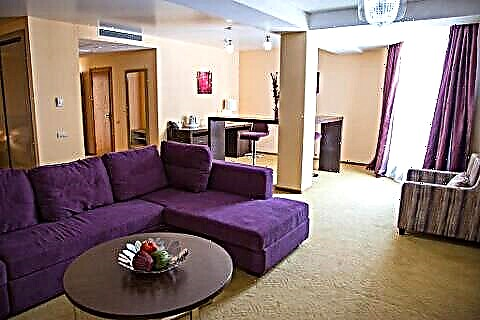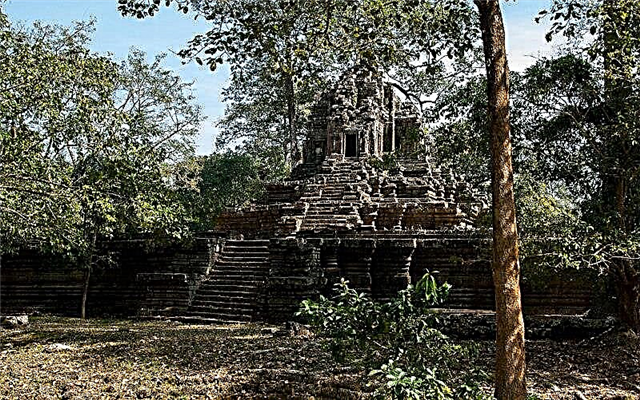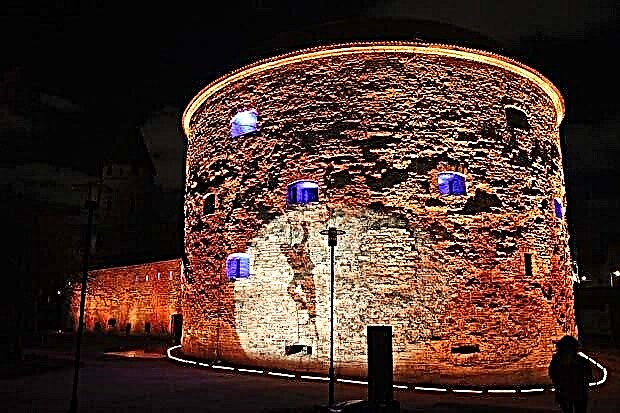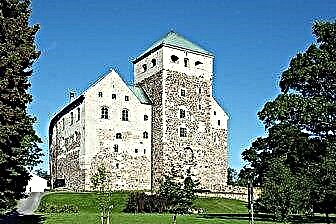The white-walled Savior Transfiguration Church stands opposite the Ipatiev Monastery and is perfectly visible from the Volga. This beautiful church is one of the few surviving monuments of Kostroma architecture of the 17th century. It is decorated with curly platbands, intricate cornices and arcature belts and looks great among the low buildings of the Zavolzhsky district of the city. The temple, as a vivid example of a posad religious building, is popular with tourists and pilgrims, and today it is owned by the Old Believer community.
Church history
The place where the temple is now located used to be called the Spassko-Nikolskaya Sloboda. This part of the city occupied the central part of the Volga region (the right bank of the Volga) and was located opposite the mouth of the Kostroma River. Spassko-Nikolskaya Sloboda was first mentioned in the chronicles of the 16th century. It is known that until 1764 this part of the ancient Kostroma belonged to the Ipatiev monastery.

View of the church from the Volga river
The ancient scribal books dated 1628 contain information about two churches of the Trans-Volga side - Spassky and Nikolsky. In those days, paired wooden churches intended for winter and summer services were traditional in Russia.
The temple-created inscription informs that the brick temple was built at the expense of the parishioners, that is, the money for it was collected by the whole world. It took three years to build, and in January 1688 the new church was consecrated. Two thrones were arranged in it - in honor of the Christian holiday of the Transfiguration of the Lord and the holy martyrs and miracle workers Cosma and Damian.

The new brick church was richly decorated with picturesque glazed tiles and intricate stone carvings. And its interiors were painted by Kostroma isographers with frescoes. Later, a porch was added to the temple on the north side.
In 1821, massive cast-iron slabs were laid in front of the altar. Now the path to the bell tower is paved with these slabs. In the late 1880s, the facades of the cult building were decorated with checkered patterns that were fashionable at that time. Art critics believe that this could have been done by local masters under the guidance of a student of Gury Nikitich Kineshemtsev, the famous icon painter Vasily Kuzmin, who worked on frescoes in the Ipatiev Monastery before the Spassko-Preobrazhensky Church. In the same years, a new red-brick fence was built around the church and the adjacent churchyard.

View of the church bell tower
At the beginning of the 20th century, the parables of the temple included a priest and a psalmist, and its parishioners were residents of seven surrounding villages. Here they kept and revered icons of old masters and valuable liturgical objects, as well as a rare altar cross made of cypress, decorated with silver embossing, in which there were particles of the relics of Christian saints. The church bell tower housed 6 bells, the largest of which, weighing more than 50 poods, was cast in Yaroslavl, in 1761 by the famous master Ivan Kornilov.
With the establishment of Soviet power, the fate of the temple changed. In 1934, it was closed to believers, the church domes, drums and the tent-roofed end of the bell tower were dismantled, having arranged a factory hostel inside. In order to accommodate the workers and employees of the city enterprise "Rabochy Metallist", two floors were created in the church and many partitions were built between the walls. Along the way, almost all the old wall paintings were barbarously destroyed due to the endless painting and shading of the plaster.

In the post-war period, the premises of the temple were used as a polling station, a club, and films were shown here.
Restoration work began here only in 1978. Within ten years, according to the project of the Kostroma architect Leonid Sergeevich Vasiliev, the church domes and the tent on the bell tower were rebuilt, returning the original forms to the old church.
In 1987, the temple was handed over to the Old Believer community, headed by Ivan Alekseevich Sergeev, the leader of the famous Strelnikovsky choir of the Kostroma land in Russia. This was the beginning of the revival of the ancient temple. The first to be consecrated was the side-altar dedicated to the Apostle John the Theologian. And in the summer of 1997, after large-scale restoration work, the main church and altar in honor of the Transfiguration of the Lord were consecrated.

View of the eastern facade of the church
Architecture and interior decoration
The two-pillar church and the picturesque tent-roofed bell tower are linked by a wide one-story refectory. The cube-shaped double-height quadrangle has three altar apses and is crowned with small, close to each other, scaly domes. The bell tower, on the other hand, has a massive silhouette. Expressive ringing arches on it are separated by triple columns, and auditory holes - lucarnes - are made in the tent.
The whitewashed silhouette of the temple fits perfectly into the panorama of the surrounding one-two-storey buildings and looks great from the river, as well as from the opposite bank of the Volga. It is especially clearly visible in autumn, winter and early spring, when there is still little foliage.

Unfortunately, the ancient frescoes, with the exception of some fragments located in the upper part of the church, have been lost. And the few areas that have survived testify to the high skill of the icon painters. These frescoes were restored in 1996 by the artist Anthem Borisovich Gubochkin.
The current state of the temple and the visiting regime
The church belongs to the Old Believer community. Since 1998, it has had the status of the cathedral of the local diocese. Anyone can get inside. The temple is open on Saturday from 15.00 to 19.00, and on Sundays from 7.00 to 11.00. Services are held here on Saturdays and Sundays.

How to get there
The temple is located on the street. Volgary, 4.
By car. The road from the capital to Kostroma takes 4.5-5 hours (346 km) and runs along the Yaroslavl highway and the M8 highway (Kholmogory). In Kostroma, before reaching the road bridge across the Volga, you need to turn left onto Shirokaya Street, which runs along the right bank of the river. Along this street to the temple - 2.2 km.

View of the bell tower of the Church of the Transfiguration
By train or bus. From the Yaroslavsky railway station to Moscow trains reach Kostroma in 6.04-6.35 hours. In addition, from the Central Bus Station of the capital, located near the Shchelkovskaya metro station, you can get to Kostroma by regular buses (7 trips a day). This journey takes 6.50 hours. The Kostroma bus station is 1 km away from the railway station. You can drive up to the temple in the city by buses No. 20, 22, route taxis No. 22, 65, 66, 76, 88 or trolleybuses No. 4, 5 (Shirokaya Ulitsa stop), and then walk 0.48 km. Or use a taxi.
Attraction rating:











